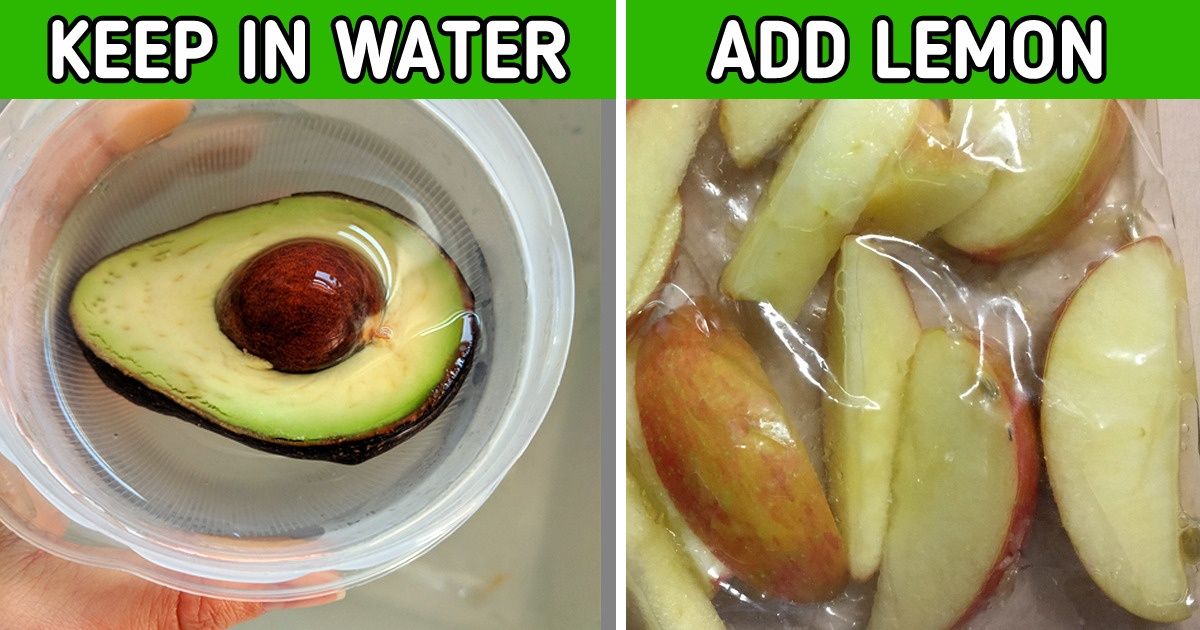20 Vacation Stories That Are Way More Interesting Than a Postcard


The healthier food is, the shorter its shelf life is. This is because there are zero preservatives, chemicals, or artificial additives. If you’re getting worried about where and how to store all your fresh produce, there are lots of ways to keep it fresh for longer. With these tips and tricks on how to keep your vegetables and fruits, you’ll not only save time, energy, and money — but you’ll be feeding your body more nutritious and healthy food!
At Bright Side, we make it our mission to help you have brighter days ahead. With these tips and tricks, you’ll be able to keep and eat more fruits and vegetables, which will keep you strong and energized!
Excess coffee beans that you don’t use in the next few weeks will stay fresh in a freezer as long as you keep them in an airtight container. Just remember to let the frozen beans thaw completely before opening the container.
“Add a little bit of lemon juice to sliced apples to keep them from turning brown. (These apples were sliced yesterday.)” © carbearnara / Reddit
Storing fresh strawberries, even in the refrigerator, usually makes them end up turning soft and getting grey and moldy. This is due to the invisible bacteria and residue that can be found inside and around these berries.
To clean your strawberries and make them last for weeks, follow these steps:
Greens, like lettuce, herbs, and spinach tend to bruise easily. Because they are fragile and have a high water content, they tend to wilt fast when they are exposed to air, heat, and humidity.
To keep your greens crisp and blemish free, do the following:
Fresh mushrooms are made up of about 92% water, which is what makes them get wet and moldy pretty quickly. Keeping mushrooms in paper bags, rather than plastic, allows the paper to absorb any excess moisture and prevents the mushrooms from absorbing other liquids in their surroundings. At room temperature, mushrooms tend to shrivel up and lose their flavor, so it is best to keep them in a paper bag in the refrigerator.
Buying vegetables like cucumbers and peppers can sometimes be cheaper in bulk, versus purchasing them in smaller quantities. To make the most out of these bulk purchases, throw the vegetables in a glass jar with some brine. Not only will you end up with a tasty condiment, but they will stay fresh for months and still retain their crunch!
To make homemade pickles:
Citrus fruits have porous skin, as you might notice with the many small holes that they have on their peels. These breathable air pockets make citrus fruits dry out very quickly when they are exposed to warm temperatures. To preserve your citrus fruits, place them in the refrigerator. Because it is easier to squeeze out the juice when your oranges and lemons are warm, bring them to room temperature before juicing them.
Airtight containers, like sealed jars, Ziploc bags, and Tupperware containers are ideal for storing pre-cut and ready to eat fruit and veggies. These containers are able to keep away additional moisture and oxygen, which are factors for bacterial growth that are responsible for causing mold and rotting.
Fresh herbs tend to dry up very quickly because of their size and low water content. A great way to preserve your fresh herbs is by keeping them in oil or butter. Not only will this add extra flavor to your meals but it will lessen your food preparation time.
To make herbed oil:
To make herbed butter:
After cutting apples and pears, you may notice that they turn brown pretty easily. This is due to the oxidation reaction of their enzymes with the air — it makes the fruit become discolored. To avoid browning, spray or soak your apple and pear slices in a water and lemon or vinegar solution. This solution also helps make your fruit slices stay crisp and last longer.
To make the fruit soak:
TIP: If you don’t like the taste and smell of vinegar, you can put your fruits in fresh orange juice instead.
You might notice that when you store certain fruits and vegetables together, they may either ripen fast, rot quickly, or not change much at all. This is because fruits and vegetables contain different levels of a ripening hormone called ethylene. Ethylene is a gas that helps a fruit or a vegetable ripen faster than others. This is one of the reasons why you should not store apples and bananas together — apples are very sensitive to ethylene, while bananas produce lots of ethylene, which can make your apples spoil fast. The same thing will happen when you store tomatoes, onions, and potatoes together. It may be wise to familiarize yourself with the different groups of fruits and vegetables that you can store together.
Vegetables like carrots, corn, beans, and cauliflower can be kept crisp for longer when you apply a cooking method called blanching. Blanching is when you briefly cook food in steam or boil it in salted water, then rapidly cool the food down in ice cold water. This process improves the color, texture, and shelf life of your veggies and is the same method that is used in the packed vegetables that you find in the frozen food section of the supermarket.
To correctly blanch your vegetables:
Similar to fruits like apples, bananas, and pears, avocado flesh has the tendency to brown once it’s been cut open. This is due to a process called oxidation. The browning occurs when the enzymes found in certain fruits are exposed to oxygen. Storing an avocado face-down in a container with some water and a spritz of something acidic, such as lemon juice or vinegar, can prevent it from browning too fast and will help keep the fruit fresh for longer.
Fruits & Vegetables You Should Store in the Fridge:
Fruits & Vegetables You Should Leave at Room Temperature:
Do you know of any other techniques for how to make your fruits and vegetables last longer?











